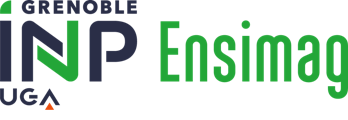Number of hours
- Lectures 18.0
ECTS
ECTS 1.25
Goal(s)
This course introduces some fundamental tools for statistical signal and image processing. These information-processing techniques are of interest in many practical problems.
Contact Jean-Marc BROSSIER
Content(s)
Mean Square Linear Estimation:
• Adaptive algorithms, principles: convergence speed, tracking
• Stochastic approximation (LMS). RLS.
• Some applications: noise reduction, prediction and identification.
State models:
• Second order stationary processes: white noise, ARMA models
• Wiener estimation
• State Representation
• Kalman
• Sequential Monte Carlo methods.
The « Sum-product » algorithm and some of its applications:
• Recursive marginalization of a product of functions.
• Message passing algorithm.
• Exact solutions for finite dimensional messages:
o Linear cases for Markov chains:
• Kalman filtering and smoothing – Application to tracking.
• BCJR Algorithm – Application to turbo-codes.
• Viterbi Algorithm – Maximum Likelihood Sequence Estimation.
Prerequisites
Course « signal processing 1 » 1st year.
Course « applied probabilities 1 » 1st year.
Course « principles and statistical methods » 2nd year.
Written exam (3h).
Examen écrit 3h
B.D.O. Anderson, J.B. Moore. Optimal Filtering. Prentice Hall, 1979.
P.J. Brockwell, R.A. Davis. Introduction to Time Series and Forecasting. Springer 2002.
A. Doucet, N. de Freitas, N. Gordon. Sequential Monte Carlo Methods in pratice. Springer 2001.
F. Michaut, M. Bellanger. Filtrage adaptatif. Théorie et algorithmes. Lavoisier 2005.



